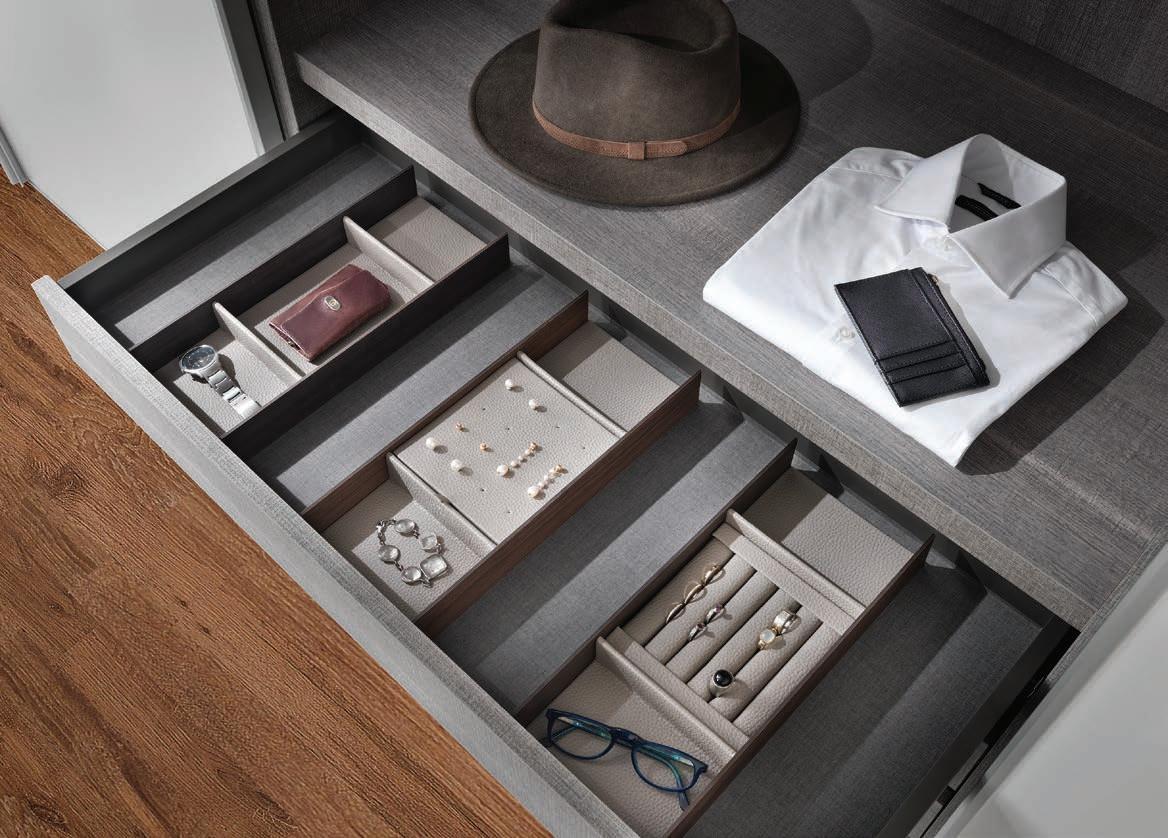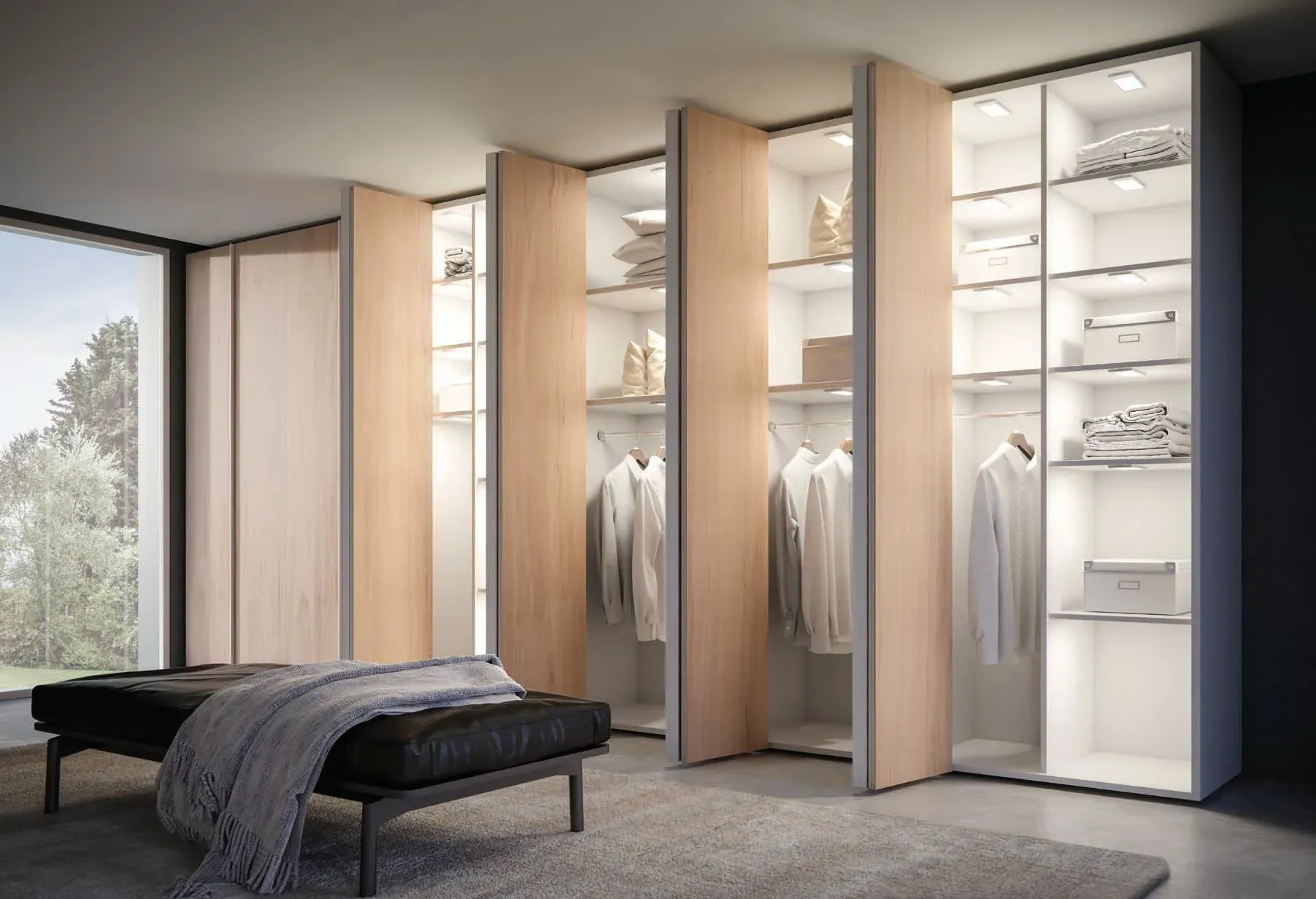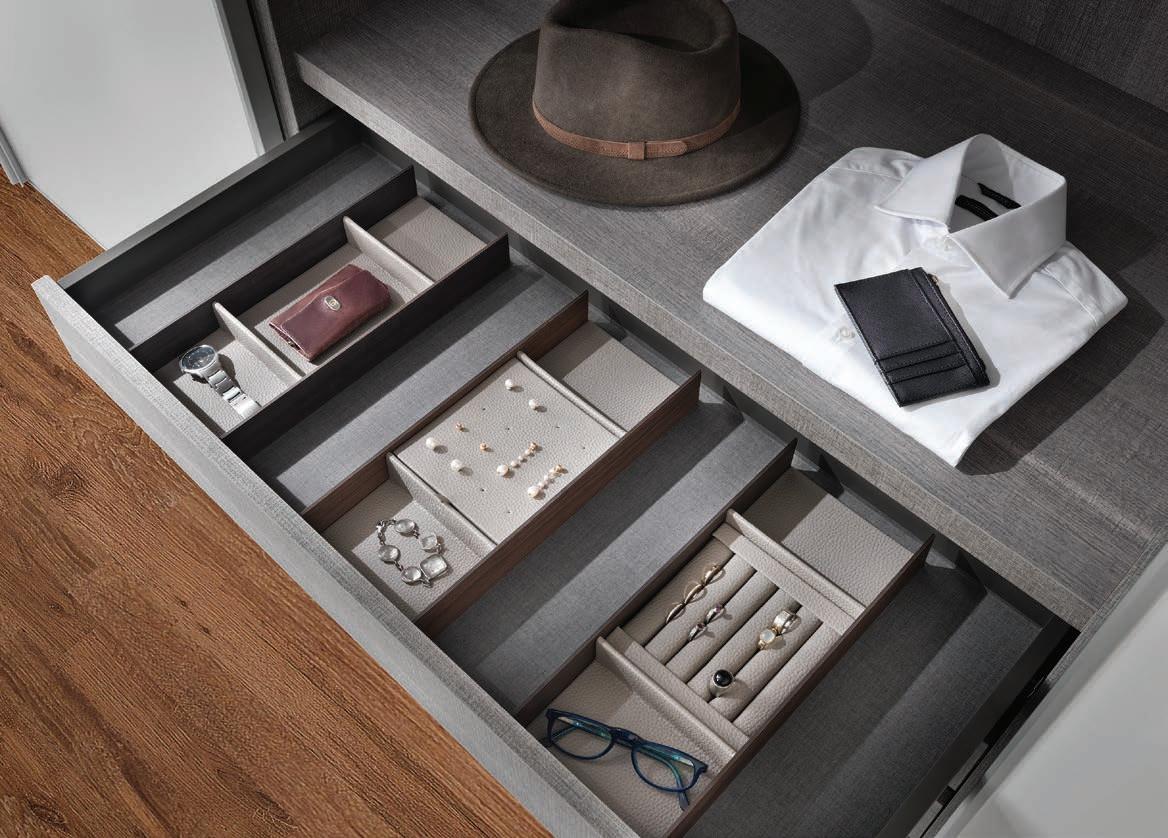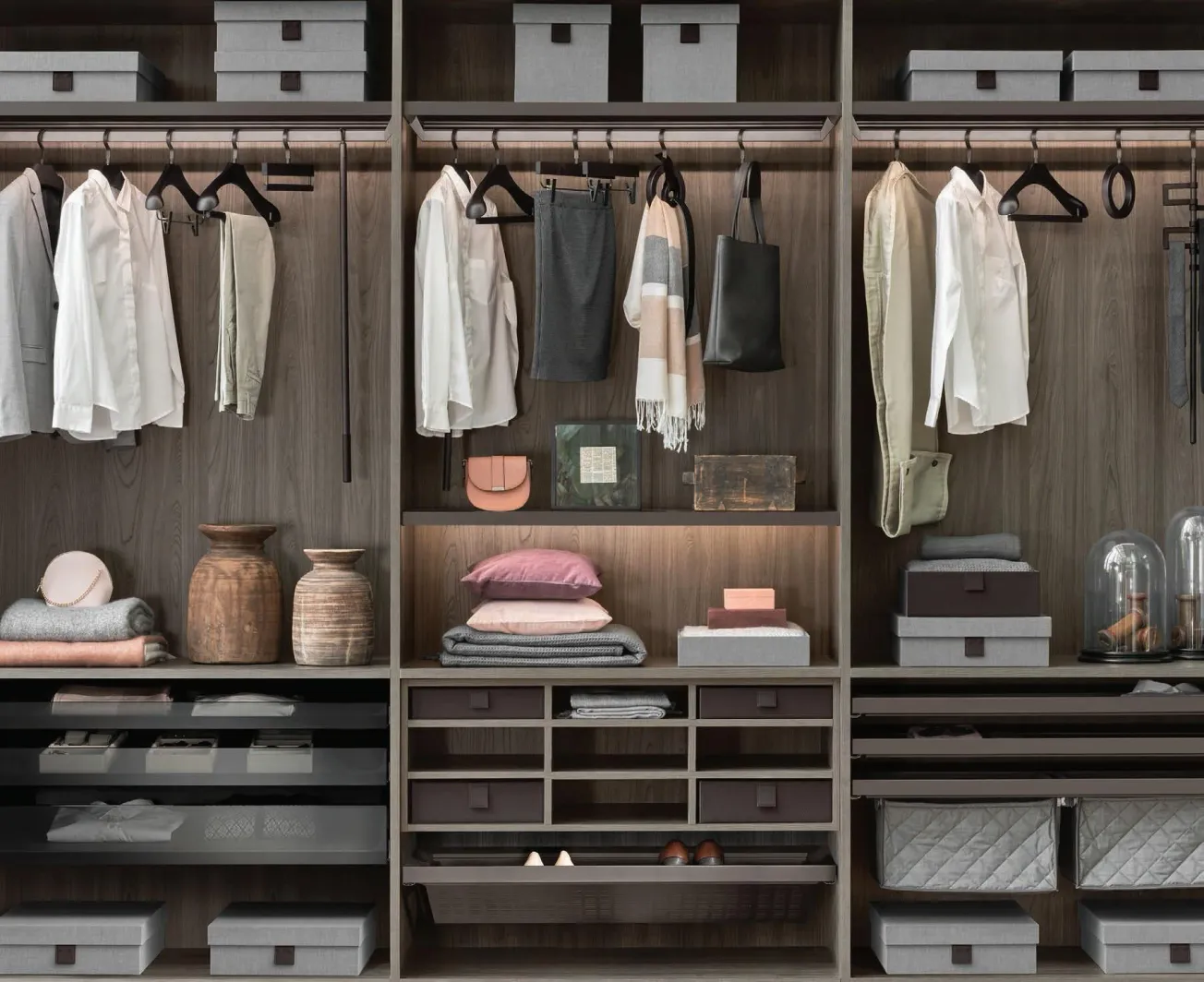Table of Contents
Closet guru Eric Marshall tells us why — and why more companies should get into the closet business.
By Jennifer Williams
Eric Marshall knows a thing or two about closets.
As a junior in high school, he became the first employee of Neil Balter, founder of California Closets and Organizers Direct in 1979. Despite a saw accident his very first day on the job, Marshall persevered and learned all about closets—and has continued to evolve with the closet industry over the past 44 years.
“Just in the past five years, the closet industry has gone crazy,” says the cancer survivor who has served as President and/or board member for the Association of Closet and Storage Professionals (ACSP). “California
Closets in Philadelphia recently had me out and told me that two years ago, they were doing about $15 million a year in business. This year, they’re on track to do $30 million.”

“So, if you're not in the closet industry…this is probably a good reason you should get in it — the growth chart is unheard of in an industry,” says Marshall. “And we haven't scratched the surface of what's going on in closets today…growth opportunities are still available.”
The Global Pandemic that stifled many industries actually benefitted the closet industry, he says. “People started working from home — we all remember that — the longer they stayed home, they more they realized, ‘I need a home office;’ the longer they stayed the more they realized, ‘Oh my kids are moving back in I need more beds… more office… more garage cabinets…’ the longer they stayed in the home the more they discovered that maybe they need a Murphy bed because maybe their kids were moving in and out.”
And there’s not just room for the large companies in this multibillion-dollar industry, says Marshall. “You've heard the saying, ‘a rising tide rises all ships’…welcome to the closet industry,” he says. “That's what's going on right now — we're rising and the more people that start doing this, the more will rise with it.”
To learn the business, Marshall says you can attend trade shows and talk to people, but franchises are not going to teach you unless you buy one. “You can also start your own business, and this is where I can come in to help,” he says.
After venturing on his own in 1997, Marshall founded Modern Closets and Garage and later opened DEA Kitchen Remodeling in 2015. Today, Marshall runs the Closet Training Institute out of Scottsdale, Arizona, where he hosts training and consulting sessions on how to grow your closet business. He also travels around the country, speaking and helping companies get their closet systems on track.
“You can come for 2-5 days and get educated on how to do a closet organizer, from installation, which is different, to design — toes out, pants on top and never put anything folded in a drawer — those are my three rules,” says Marshall.
“My whole goal is to help people be more successful in life,” he adds. “I am now 100 percent about building the closet industry.”
REMODELING BY THE NUMBERS
And while home remodels have leveled off over the past year or so, closet remodels have continued their upward trajectory, he says. “Why do you think closet remodels are on the rise?” he asks. “Because they're affordable. They're easy.”
“What is happening now with the higher interest rates…people don’t want to take out a $100,000 loan to redo their kitchen,” says Marshall, who says that’s the average cost of a kitchen remodel today. “Instead, people are more interested in remodeling smaller spaces. What's that mean? Closet companies right? Kitchen cabinet companies don't benefit from this, but somebody who could make a mud room with TFL cut on their CNC machine… you're benefiting.”
The average cost of a closet remodel is about $7,500, says Marshall. “That’s more doable for a majority of consumers,” he says. “Plus, a kitchen or other large remodel can take months, even years to finish, while some closet companies can be in and out in a day — instant gratification.”

Marshall says that closet companies, most of which use TFL for their systems, get their materials from right here in America, alleviating the lingering supply chain worries. And from a business side, the closet companies can charge more per board foot than other industries.
“When you sell a shelf, there’s value in it,” he says. “Board square foot in closets is valued way more than any other board in your home — and there’s a lot of them! This is an 'I want that' purchase, so we can ask more money — closet people are making more than carpenters these days. Most of us in the closet industry are selling each board foot at 4-5 times cost… people ask why are they charging that much — and I say, why aren’t you charging more? Cause it’s adding value — it goes back to ‘she wants it, she gets it.’ There’s a huge value in that.”
“So the real question is, why are builders not doing this?” asks Marshall. “Why are we not in the builder market? I mean, It’s really interesting…until some builders start putting good, functional closets in every single house they sell, we haven't done our job.”
“Doesn’t every house get a toilet paper holder?” he asks. “Do you use your closet more than you use the toilet paper holder? I mean, every house gets a kitchen…they all get doors and then you get a crap closet that’s not useful. Do they make dysfunctional kitchens? No!”
“But just let them keep doing it wrong so we can keep tearing it out and making that space more usable,” he adds. “But going forward, we need to get in the door — we need to knock on that door and break it down and tell them they need new closets.”
SELLING A LIFESTYLE
“We’re selling a lifestyle. We’re selling a change in what happens through the process of organizing your stuff,” he says. “Organizing your clothing makes time savers happen. I can put all my stuff away and can see what I have. That’s huge!”
“Movies, television shows, social media…people see cool closets and they want one,” he says. “It’s helping to drive the industry, along with the fashion industry. People have been stuck inside for too many years and they now are out there, looking for what’s new.”
Marshall says new options in closet design are changing the game and making redesigns more attractive. “The new lighting we’re using is flexible, and they make a switch for it you can have right on your nightstand. In some sense, you can be looking at your closet considering what you’re going to wear while you’re lying in bed in the morning, waking up.”
And while TFL remains the most popular material used in closet designs today, there are a “crazy” number of colors and designs available, he says. “Because this industry is so competitive, people jump in and try to come up with these new ideas,” explains Marshall. “But TFL is one of those things that just works…and while the offerings of colors, textures, edgebanding are out of control, 80 percent of new closet designs are white. It’s the most reflective color and does show your clothes really well. Browns are also big these days. We are also seeing a lot of warmer colors, like rojo, reds, yellows that are being used as accents.”
“A lot of the materials we have today — you have to look really closely and a lot of times, you still cannot tell if it’s ‘real’ wood or not,” he says. “And these materials are incredibly durable and sustainable, so it’s a win-win.

But closets encompass so much more these days, says Marshall. “We’re no longer just talking about the closets in your bedroom,” he says. “It’s mudrooms, pantries, garage cabinets, home offices, wall beds — can make all these spaces function better for my lifestyle. Closet companies can actually come to your house, measure for you and custom design for your particular space. What’s easier than that?”
“Closet Maid does a study every year — it's all about home sales, since Closet Maid is big into newconstruction with the bulk of their business being wire shelving — that's what they do,” says Marshall. “For the past 20 years, they have asked what consumers look for in a new home. For 19 years, the study found that a women looks first at the kitchen and then at the closets. This past year, the study found that the woman looked at storage (closets) first, and then goes to the kitchen. We’ve finally come of age — we're finally playing!”
The internet and social media are full of organization tips and tricks and hacks, he says. “The market, the opportunity for further growth…it’s there. It’s ripe for the picking,” he says. “For example, Modular Closets are all over the Internet. If you're not following them and you're a competitive company not already following them, find Modular Closets on your Instagram and start following them because they're doing crazy stuff right now. They’re doing full high rises. They’re shipping closets in the box that people that are installing themselves and their influencers are pretty good.”
And while Marshall has seen many changes in closets over the past four decades, he says one thing has remained constant. “I can still remember the dimensions of the closets we did 40 years ago,” he says. “By the way, we didn’t have drawers…no belt racks no tie racks no adjustability. Walk-in closets weren’t even really around yet. We used raw particle board and sanded the edges… the only thing that's still true today about the original closet that we did is the standard panel is still 14 inches deep today.”
“And while it's kind of the same closet — it does the same thing — but the features are different,” he says. “We still have long hangers and double hangers women are still gonna wear dresses; we still have drawers we still use all those things… but it's different in the choices available. Tiebacks have gone from chrome to gold, handles have gone from really small to quite large. There are so many choices for everything these days.”
EXPANDING THE MARKET
The closet industry actually puts people who wouldn’t normally be in the woodworking industry in the woodworking industry,” he says. “It doesn’t take a crazy amount of time to train and learn the business, and once you train people to design and create closets, within 4-5 years, they can be making six digits. We also are seeing more women get involved, which is important to me because there is such a gap in the industry. Closets provide a huge opportunity for women to jump into this place and start making money.”
Another key selling point for closet renovations are that closets are American made, says Marshall. “I don't know anybody that's importing closets at all. They might be importing Italian melamine, or they might have components that come from Germany, but guess what — they cut it and make it here in America.”
“So, people ask me all the time...why closets?” he says. “Because organization is really big right now; working from home remains popular; full remodeling costs can be prohibitive… that's why closets are gold.”






